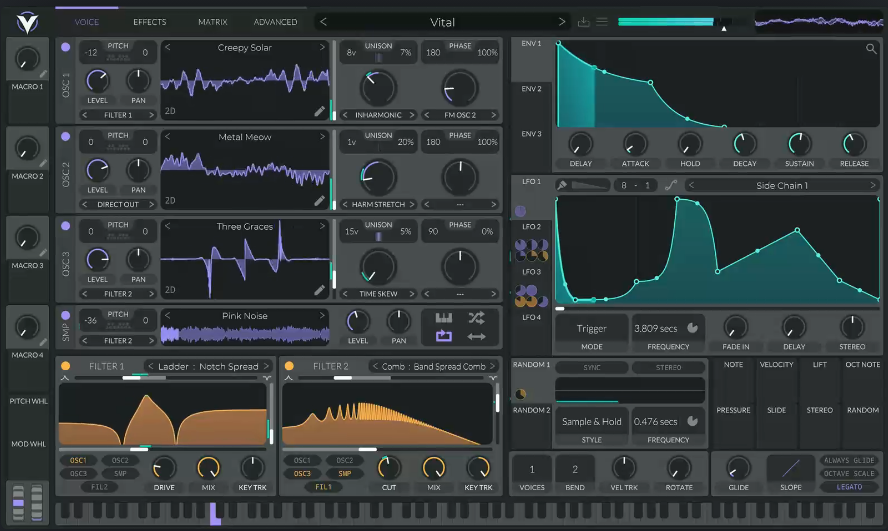Download: https://vital.audio/#getvital
Video guide by In The Mix: https://www.youtube.com/watch?v=7qQX6YGBQEA
I don't think there is any modern producer who hasn't heard of Vital, and probably even less who haven't heard of Serum. Those are the options when it comes to wavetable synths with great visual interface to give you better insight into your sound design. And from my limited experience with Serum, I think Vital might just be better in more than just visuals and price (Serum is so damn expensive!)
Vital comes feature complete with its free version. The only thing you get for paying is more wavetables and presets as well as exclusive perks from the developers. It's a great boon to hobbyist producers, and these guys have great confidence that you'll donate to support the effort. And I think that confidence is well placed, they deliver.
Vital is not one of those free alternatives that comes just as a way to do something a popular program does, but quicker, dirtier and worse. It's a feature-complete, well-polished product designed for professional use and comes with all bells and whistles you need to get amazing sounds out of it. And even some extras that you won't find in every other popular synth.
If I go over every feature of Vital, we'll be here all day, so I'll highlight some of my favorites and let you decide if you want to give it a chance:
Stereo LFOs allow you to stereoize your patches by desynchronizing your effect modulations. In layman's terms, you can use one control to do two different things to your left and right ears and get some clean (or trippy) stereo!
Random oscillators with tons of customization for all of your modulation needs. They can help your patch sound more organic and fresh throughout your track, or create some whacky, glitchy and/or chaotic sounds. It comes with a stereo feature too!
Great options for keyboard/note tracking, allowing you to keep your effects consistent (or warp them) on different pitches. You got a keyboard track option built into your filters as well as note and note relative to octave controls that give you total freedom over how your instrument behaves on different pitches!
I've been using Vital in my own productions for a while now and it's been a breeze to make the kind of sound I want with it. I hope this little overview helps you take the plunge and play around with it to see if you like it! Good luck!
Edit: I'm still trying to figure out how to format post better for Lemmy, so I had to re-add the link to download after realizing it got replaced by the image. Whoops!



